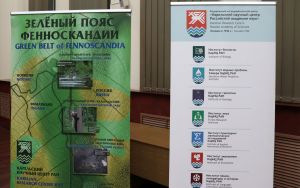The European Green Belt is the territory along the former Iron Curtain. Being for a long time inaccessible to the general public, the areas have preserved their valuable natural heritage, including intact meadows, forests, and wetlands. At the turn of the centuries, the European community joined together to save the largest green network in this part of the world. The goals of the Association are to protect the nature, and to study the cultural and ecological history of this unique area.
The European Green Belt falls into four regions: Fennoscandia, Baltic Region, Central Europe, and the Balkans. Each one is supervised by a regional coordinator elected biennially. Coordinator’s tasks are to provide support to implementation of the Association’s action programme, take part in regional meetings, keep record of activities and prepare reports, launch new projects, contribute to promotion and visibility of the European Green Belt. The only scientific centre supervising this thematic area in Russia is KarRC RAS. Lately, KarRC, represented by its President Olga Bakhmet, has been the coordinator for the Green Belt of Fennoscandia.
The European Green Belt and its segment – the Green Belt of Fennoscandia, provide an environmental framework for the preservation of natural heritage. Karelian Research Centre RAS has been implementing extensive related activities on a regular basis for over 30 years, which is the reason for its being re-elected as the coordinator of the European Green Belt’s largest segment – explained Olga Bakhmet.
Over these years, KarRC RAS has produced feasibility studies substantiating almost all the protected areas (PAs) founded in Karelia in the past decades, and gathered an extensive database on the natural ecosystems of the Green Belt of Fennoscandia and its cultural heritage. E.g., researchers from KarRC RAS prepared nomination papers for the establishment of the Ladoga Skerries National Park and Kalevalsky NP; research work at the Kostumukshsky Strict Nature Reserve has been underway for many years.
- We have also identified quite a number of other areas: landscape reserves and bird sanctuaries, nature monuments, and others, varying in significance, objects of interest, and size. Many of the PAs have been endorsed, quite a few remain in process – so called “provisional PAs” – KarRC RAS President added.
At present, Karelian scientists together with colleagues from European countries, namely with the Ministry of the Environment Finland, are implementing a number of large projects for the protection of rare and endangered species, environmental education, and sustainable management of natural resources. Conferences, workshops, working meeting are organized. E.g., after the European Green Belt Association General Assembly meeting on November 5th, it was decided to have the next conference in Petrozavodsk in 2021, if the epidemiological situation allows.
Implementation of projects related to the Green Belt of Fennoscandia is a federal-level task in Russia, handled, in particular, with support from the Russian Environment Ministry. Karelian Research Centre RAS oversees Green Belt border areas not only in Karelia, but also in the Murmansk Region, i.e. the Russian-Finnish and the Russian-Norwegian sections of the border.
The fact that over a half of the Green Belt of Fennoscandia falls in the Arctic zone adds to the relevance of its conservation. The proposal to employ earlier developments in this sphere is already recorded in the documents regarding the development of the Russian Arctic.
News

November 30, 2020
Karelian Research Centre RAS was re-elected as the regional coordinator of the Green Belt of Fennoscandia, encompassing border areas of Russia, Finland, and Norway.



